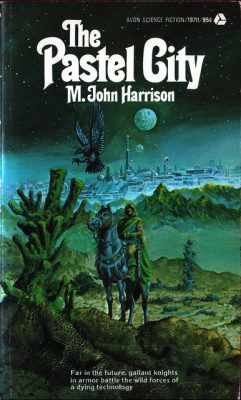Reviewer: Emera
Date read: May 27, 2018
Book from: Personal collection
Capt. Will Laurence is serving with honor in the British Navy when his ship captures a French frigate harboring most a unusual cargo–an incalculably valuable dragon egg. When the egg hatches, Laurence unexpectedly becomes the master of the young dragon Temeraire and finds himself on an extraordinary journey that will shatter his orderly, respectable life and alter the course of his nation’s history.
Thrust into England’s Aerial Corps, Laurence and Temeraire undergo rigorous training while staving off French forces intent on breaching British soil. But the pair has more than France to contend with when China learns that an imperial dragon intended for Napoleon–Temeraire himself– has fallen into British hands. The emperor summons the new pilot and his dragon to the Far East, a long voyage fraught with peril and intrigue. From England’s shores to China’s palaces, from the Silk Road’s outer limits to the embattled borders of Prussia and Poland, Laurence and Temeraire must defend their partnership and their country from powerful adversaries around the globe. But can they succeed against the massed forces of Bonaparte’s implacable army?
I’d been meaning to read Naomi Novik’s Napoleonic dragon (!) series since it came out, couldn’t believe it took me so long, and felt more than well rewarded for finally breaking into the series, especially as a summer read. (Though I admit my interest slowly tapered while reading the second volume, a few weeks after this one.) His Majesty’s Dragon is an utterly delightful read, and one I expect to revisit many times. The methodical, economical precision of the historical detail and characterization is both engrossing and comforting, especially as punctuated by occasional leaps of quiet wit or irreverence. And the “stranger in a strange land” narrative, with staunch, conservative, thoroughly honorable Capt. Lawrence being thrust into the rough company of dragon aviators, is just so well executed. Lawrence is my favorite part of the series: I love his acuity, his brusque yet cultivated style of masculinity, his carefulness of observation, and his unbending sense of duty toward his country and fellow military men and women. On a personal level, I honestly aspire to be as capable and honorable as him; on a craft level, I loved the narrative execution of his uncomfortable yet determined entry into the world of the dragon aviators, and all of their upturnings of British class and gender conventions.
Surprisingly, Temeraire, Lawrence’s unlooked-for dragon, is a bit too charmingly idealized for my taste; I felt my interest played upon in a rather automatic way whenever the book detailed how endlessly graceful, intelligent, ingenious, etc. he is. Yes, his youthful impetuousness is intended to offset his many virtues, but he’s still too perfect to be really interesting. It’s far more amusing and engaging, for example, to watch Lawrence reach the limits of his own intelligence and have throw up his hands in bafflement at having to “parent” a hyperintelligent dragon. (And, more broadly, to watch Lawrence unconsciously adjusting the boundaries of his masculinity to accommodate the deeply solicitous, tender relationship he has with Temeraire.)
Regardless – highly recommended if you love fantasy that’s deeply grounded in a convincing sense of practical reality, if you love alternate history or historical fantasy that plays on gender and class tensions, or if you’ve ever wondered just how the Battle of Trafalgar would have worked out if the European powers had aerial dragon corps.
Related reading:
Sorcery and Cecelia, by Patricia C. Wrede & Caroline Stevermer (1988): review by Emera
Dealing With Dragons, by Patricia C. Wrede (1990): review by Emera
Flight of the Dragon Kyn, by Susan Fletcher (1993): review by Emera
